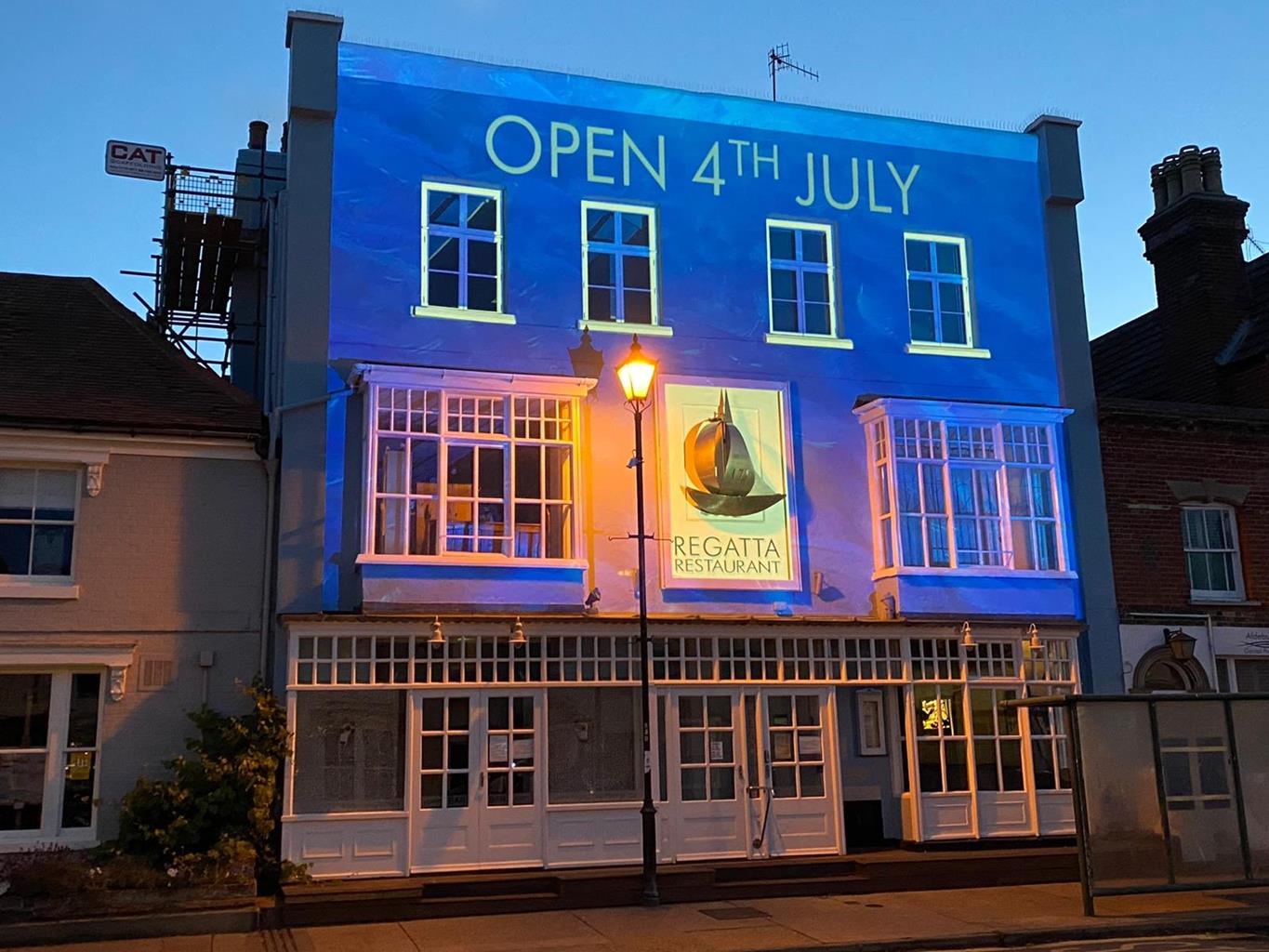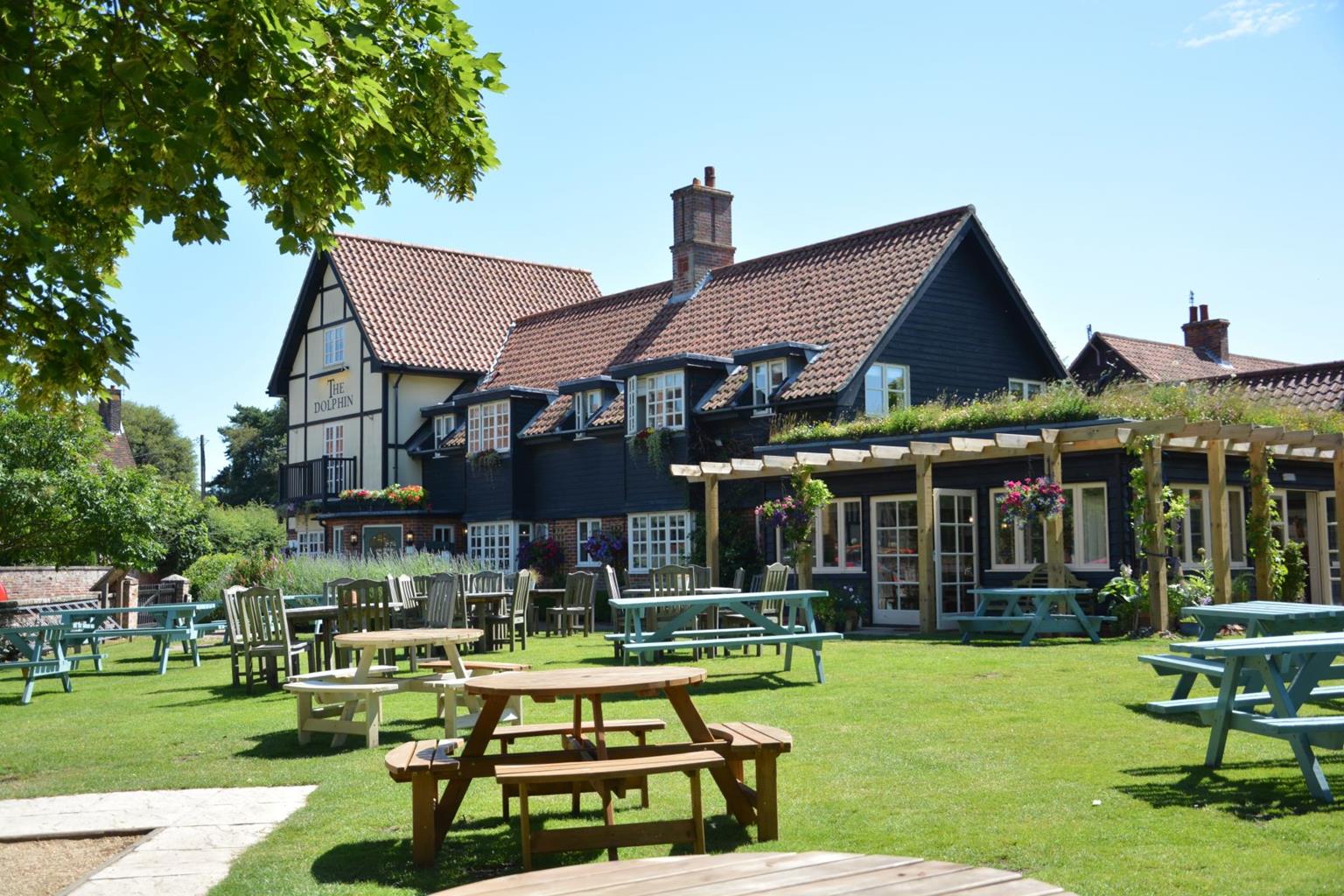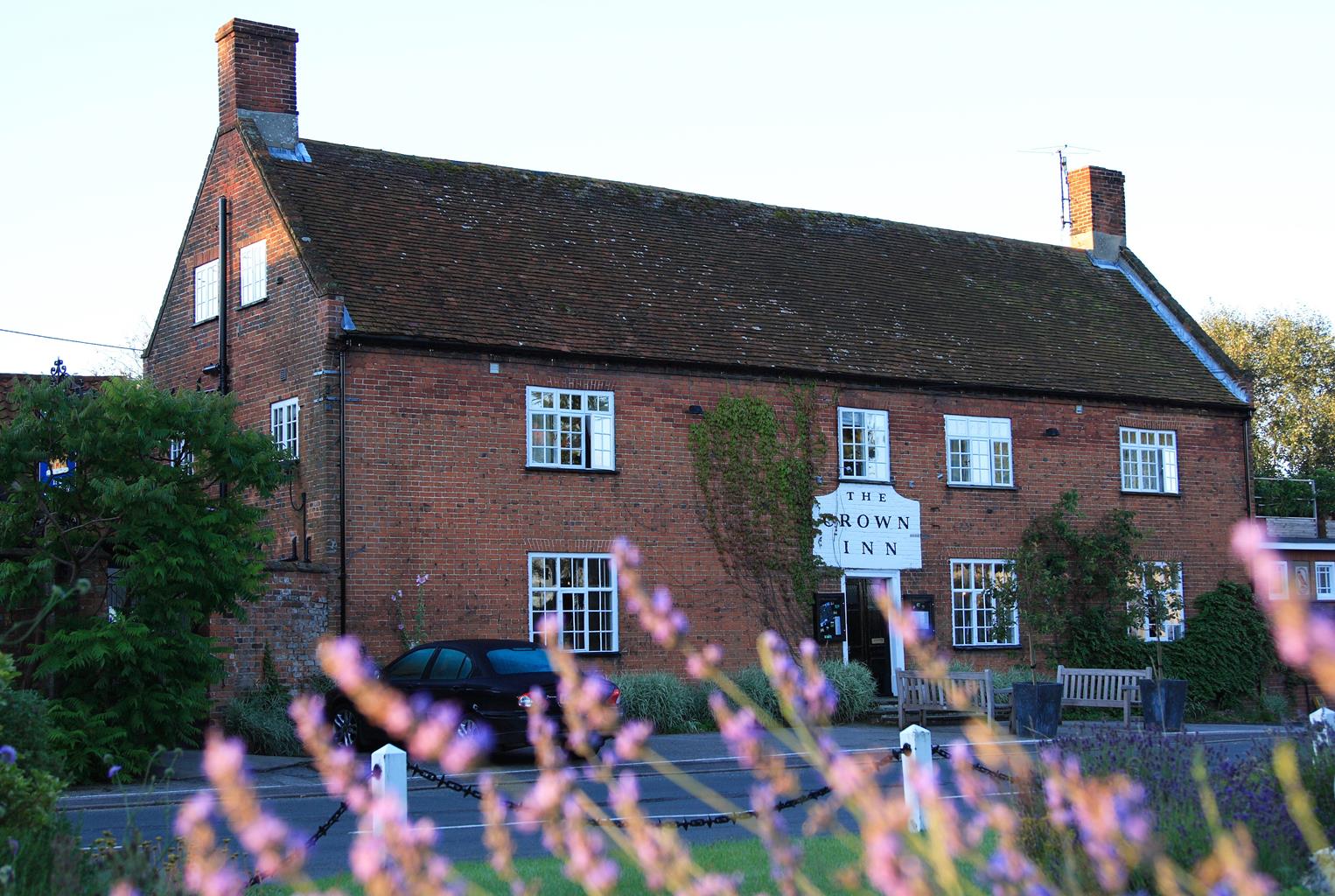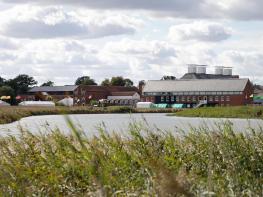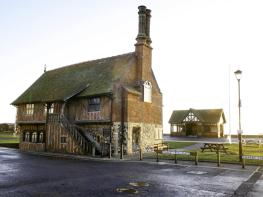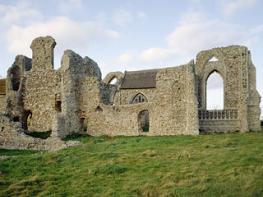Downstairs at the Old Stable there's a spacious open plan lounge/dining room/kitchen and…
Snape Maltings

From Maltings to Sandlings
6.25 miles (10.1kms)
About the walk
At its height, Snape Maltings was one of the largest flat floor maltings in the country, with 7 acres (2.8ha) of buildings. In the 19th century, 100-ton sailing barges would pull into the quay here to take malt made from Suffolk barley to breweries in London and Norwich. But such large complexes were inefficient, and in 1965, after 120 years, the malting of barley ceased, and the owner began converting the buildings to other uses.
Benjamin Britten’s Concert Hall
The initial development turned the malthouse into a concert hall, which subsequently has become famous the world over as the home of Benjamin Britten’s Aldeburgh Festival. It was opened in 1967, but was gutted by fire two years later on the first night of the festival. It was completely restored within a year, and is now used for other concerts as well as the annual Aldeburgh Festival. Snape Maltings Other buildings were converted, initially to provide an art gallery and craft shop, but now there is a whole complex of shops and refreshment places. Renovation and conversion continues, with other buildings being turned into flats. This route gives you a good look at the different landscapes which make up the Suffolk Coastal belt known as the Sandlings, all part of the Suffolk Coast Area of Outstanding Natural Beauty.
The Alde Estuary
The estuary comprises three rivers: the Alde, Ore and Butley. It spills out into the sea after negotiating the massive shingle spit of Orford Ness and is a Site of Special Scientific Interest. This walk covers the southern bank of the very highest reaches of the estuary from its inception at Snape Maltings. The Alde here is wide and shallow with areas of mudflats and saltmarsh which are very attractive to birdlife. You may therefore see a wide variety of wetland birds including avocets, redshank, shelduck and grey heron, as well as enormous flocks of black-tailed godwits.
Tunstall Forest
You may notice that the Tunstall Forest is far from typical (aside from the fact that it’s next to two neighbouring little villages each calling themselves Tunstall). Apart from the conifers with which the forest is most closely associated, you’ll see a variety of broadleaved trees. These mainly date from after the great storm of 1987 when thousands of trees were blown down in Tunstall Forest and were, in the main, replaced by non-conifers in order to provide a little more diversity. The commons around the forest also boast a good deal of gorse, whose yellow flowers can be seen at most times of year. The areas of open heathland among the trees are home to rare ground-nesting birds such as the nightjar and woodlark.
Walk directions
From the Maltings car park, turn left onto the B1069 road, and at the junction with a road signposted to Orford, go left on to a broad green track marked ‘footpath’. The track heads towards the marshes at the edge of the river, with Snape Maltings and car park beyond the hedge to your left. The path joins another track coming in from the left, turning parallel to the river, and heading for a thin line of trees, where the path becomes boardwalk, with fields to your right, and reeds lining the river bank to your left. Continue following the Suffolk Coast Path (SCP) markers. Walk along the bottom edge of Iken Cliff picnic site, a sloping field with views across the river. Keep your eyes peeled for some Steps on yhr right with wooden handrails and two SCP signs. Go up these steps, then follow a path between two fences. Turn left on to a sandy track, and after about 100yds (91m), right on to a tarmac road, looking for a footpath sign to the left after another 100yds (91m).
Follow this broad track down to the buildings of a pig farm, bearing left around the buildings and through the car park, then right on to a track heading up a modest hill towards some trees. Carry straight on when you reach the corner of the wood, then go right and then left to take you on to a broad track on the other side of the line of trees. The track goes through a line of trees ahead.
When you get to the other side, take the footpath right, still following the SCP blue discs with yellow arrows. With trees to your right, and a wide expanse of pig enclosures to your left, continue ahead to a road. Cross the road following the SCP signed footpath. Head into the Tunstall Forest to reach a fork in the path after about 100yds (91m). The left path continues with the SCP. Follow the other path. This leads roughly parallel to the road until it crosses a forestry track by a barrier and swings left immediately afterwards. At the first crossroads, which is somewhat oblique, turn right. Then head straight over at all subsequent path crossings.
You eventually arrive at a clearing with some forestry cottages in it. Continue in the same line across the corner of the clearing, crossing a gravel track and taking the wide grassy path to the right of a post bearing the number 30. After 100yds (91m) take the turning off to the left. Go straight on at all crossing paths. After nearly a mile (1.4km), the path crosses a minor road, then shortly after emerges on to the edge of Blaxhall Heath, where you may see some of the long ditches dug during World War II to foil German glider landings. Cross the B1069, and continue straight ahead around a black and yellow forestry gate. The trees are rather younger here, mainly silver birch. The path narrows down, and, at the point where it meets a minor road, turn right and follow the road back to Snape Maltings.
Additional information
Riverside embankments, forest track and country lanes
Estuary, farmland, forest
On lead
OS Explorer 212 Woodbridge & Saxmundham
At Snape Maltings
At Snape Maltings
WALKING IN SAFETY
Read our tips to look after yourself and the environment when following this walk.
Find out more
Also in the area
About the area
Discover Suffolk
Suffolk is Constable country, where the county’s crumbling, time-ravaged coastline spreads itself under wide skies to convey a wonderful sense of remoteness and solitude. Highly evocative and atmospheric, this is where rivers wind lazily to the sea and notorious 18th-century smugglers hid from the excise men. John Constable immortalised these expansive flatlands in his paintings in the 18th century, and his artwork raises the region’s profile to this day.
Walking is one of Suffolk’s most popular recreational activities. It may be flat but the county has much to discover on foot – not least the isolated Heritage Coast, which can be accessed via the Suffolk Coast Path. Southwold, with its distinctive, white-walled lighthouse standing sentinel above the town and its colourful beach huts and attractive pier features on many a promotional brochure. Much of Suffolk’s coastal heathland is protected as a designated Area of Outstanding Natural Beauty and shelters several rare creatures including the adder, the heath butterfly and the nightjar. In addition to walking, there is a good choice of cycling routes but for something less demanding, visit some of Suffolk’s charming old towns, with streets of handsome, period buildings and picturesque, timber-framed houses.
Nearby stays
Restaurants and Pubs
Nearby experiences
Recommended things to do
Why choose Rated Trips?
Your trusted guide to rated places across the UK
The best coverage
Discover more than 15,000 professionally rated places to stay, eat and visit from across the UK and Ireland.
Quality assured
Choose a place to stay safe in the knowledge that it has been expertly assessed by trained assessors.
Plan your next trip
Search by location or the type of place you're visiting to find your next ideal holiday experience.
Travel inspiration
Read our articles, city guides and recommended things to do for inspiration. We're here to help you explore the UK.

